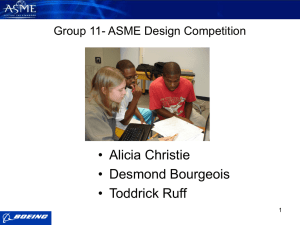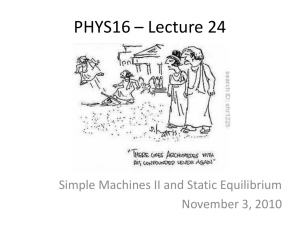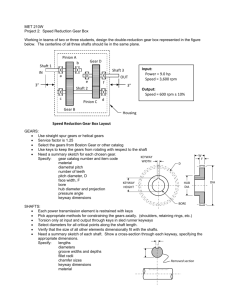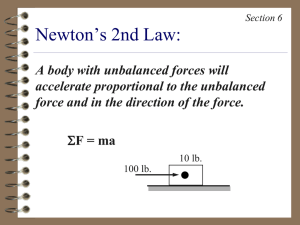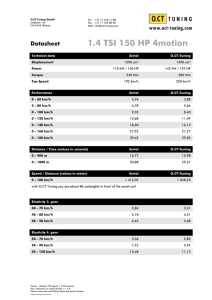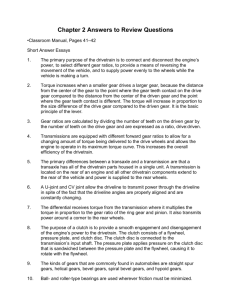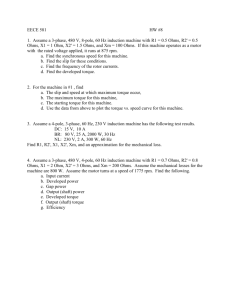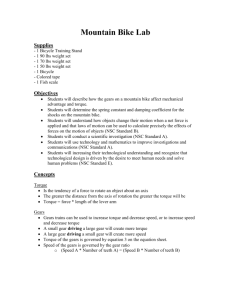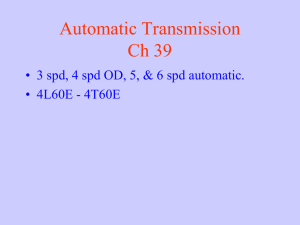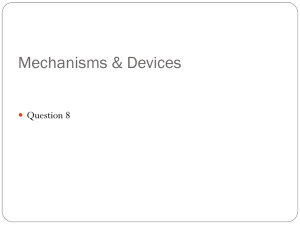1.1.1 Mechanisms
advertisement
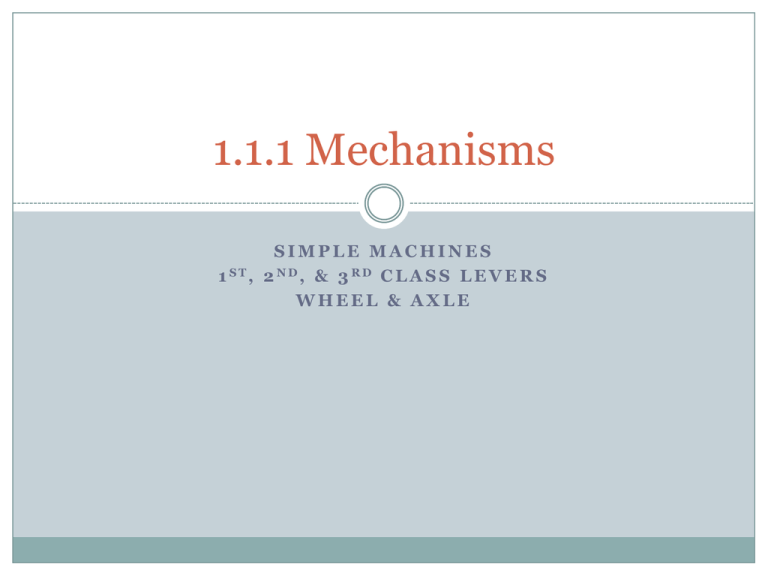
1.1.1 Mechanisms SIMPLE MACHINES 1 ST, 2 ND, & 3 RD C L A S S L E V E R S WHEEL & AXLE Quietly read and decide what type of learner you may be. Once you have decided, privately write your choice on the sticky note provided. (1) I do it, build it, then I look at it to make it better. (2) I need to draw/write out my ideas before I start. (3) I work best talking about my ideas with others and make a plan before I start. I then grouped them from their own number choice. Your group’s challenge is to create a... • 1st class lever system • 2nd class lever system • 3rd class lever system – with various FT parts & a scientific mass. Apply the scientific mass (resistance force) to the lever and use a spring scale and/or a force meter (measures force in Newtons) to determine static equilibrium. ~OR~ • wheel & axle system – – utilizing the FT parts, a scientific mass, and string. Attach one end of a string to the outside surface of the wheel. Attach one end of a second string to the outside surface of the axle (You’ll attach the scientific mass here later) You want me to do WHAT???? Build a simple machine…we’ll be testing it soon for MA (AMA, IMA, and Efficiency…) Here’s some ideas to get you started… Hints on how these FTs go together? (YOU WON’T USE ALL/MANY OF THESE FOR THE SIMPLE MACHINES, BUT IT GIVES YOU SOME IDEAS!) Universal Joint Transmits power when shafts are not in line Spur Gears Change speed, torque, and rotational speed Idler Gear No effect on speed and torque, but input and output shafts turn in the same direction Rack & Pinion Rack (in red) & pinion (in black) converts rotary motion of the pinion gear to linear motion of the rack Reversible, positive drive with no slipping Crown & Pinion Mechanism reduces speed and increases torque Output shaft is at a 90-degree angle to the input shaft Gears rotate in opposite directions Bevel Gears Gears increase torque or speed Output shaft is at a 90-degree angle to the input shaft Gears rotate in opposite directions Worm Gear Gear increases torque and reduces speed Output shaft is at a 90-degree angle to the input shaft Direction of rotation can be reversed, but the output gear cannot drive the worm gear Cam As a cam rotates the flat follower is raised and lowered, converting rotary motion to linear motion FOLLOWER CAM LOBE Chain & Sprocket Chain and sprocket apparatus increases speed or torque Mechanism can run in reverse direction with no slipping Input and output shafts rotate in the same direction Pulley & Belt Mechanism can increase torque or speed and can run in reverse Input and output shafts are parallel and rotate in the same direction Slipping of the belt may occur Motor Driven Worm Gear Gear reduces speed and increases torque Output shaft is at a 90-degree angle to the input shaft Direction of motion is reversible, but the output gear cannot turn the worm gear Motor Driven Pulley & Belt Mechanism can increase torque or speed Input and output shafts are parallel and rotate in the same direction Slipping of the belt may occur Screw Mechanism converts rotary motion to linear motion and increases torque Direction of rotation is reversible
